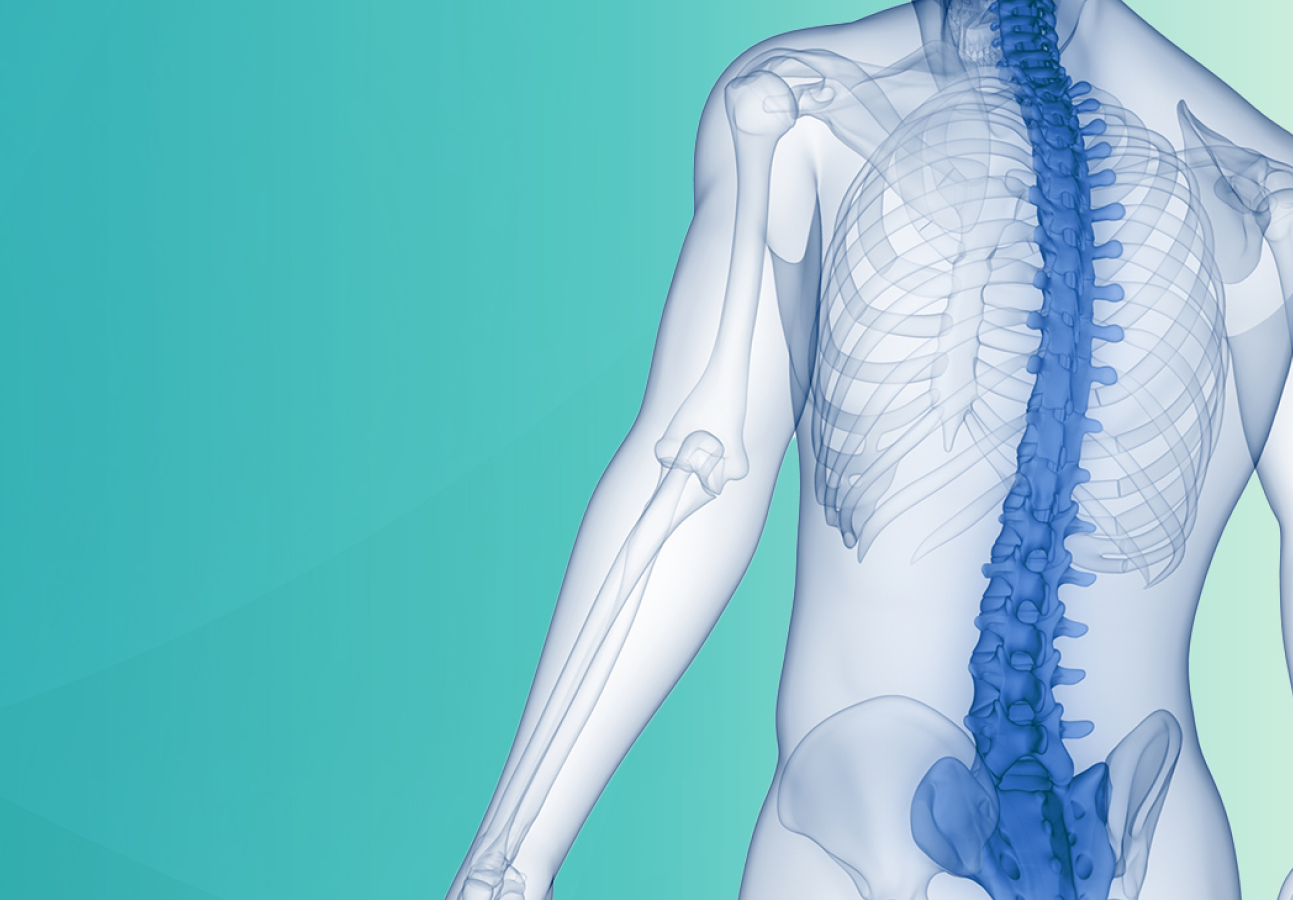椎間板変性症と椎間板ヘルニアのリスク因子
セルゲル法は椎間板変性や椎間板ヘルニア等が原因の疾患に有効な治療法です。
今回は、椎間板変性症と椎間板ヘルニアのリスク因子に関して解説します。
椎間板変性症と椎間板ヘルニア
脊椎は大きく分けると、①骨(椎体)、②椎間板、③神経の3つからできています。
椎間板は椎体と椎体との間にあり、線維輪と髄核の2層構造になっています。線維輪は線維が交互に組み合わさっており、どの方向に動かされても衝撃を緩和できる構造になっています。髄核は水分で満たされており、クッション機能を助ける働きをしています。
様々な要因により、本来の椎間板の形が保てなくなることで変性が始まり、椎間板の機能が低下し、腰痛などの症状を引き起こします。これは椎間板変性症といいます。
変性が進むと、線維輪の亀裂から髄核が外に飛び出していき、腰椎椎間板ヘルニアとなります。
さらに変性が進んでいったら、脊柱管狭窄症、腰椎不安定症、すべり症などの疾患が発生してしまいます。

椎間板変性と椎間板ヘルニアのリスク因子
椎間板の変性や椎間板ヘルニアの発生には様々な要因が関連しています。
遺伝的要素
・遺伝
椎間板の構造には様々な遺伝が関係しています。これらに変化や異常があると、腰痛や椎間板ヘルニア等が発生しやすくなると明らかにされています。
例えば、アグレカンは椎間板の髄核等を構成していますが、この遺伝子に変化があると、椎間板が変性しやすいです。ビタミンD受容体遺伝子に異常があると、椎間板ヘルニアの発症リスクが高まります。
*Zielinska, N., Podgórski, M., Haładaj, R., Polguj, M., & Olewnik, Ł. Risk Factors of Intervertebral Disc Pathology—A Point of View Formerly and Today—A Review. Journal of Clinical Medicine. 2021, 10(3).
・背の高さ
背の高さも腰部椎間板ヘルニアの発症に関連しているとわかっています。
フィンランドの研究(*)では、180㎝以上高い男性は椎間板ヘルニアになるリスクが2倍で、170㎝以上高い女性はリスクが3倍で、背が高ければ高いほどヘルニアのリスクが高くなるのです。
*HELIÖVAARA, M. Body Height, Obesity, and Risk of Herniated Lumbar Intervertebral Disc. Spine. 1987, 12(5).
・加齢
加齢に伴い、椎間板が変形していき、椎間板ヘルニアが発生しやすくなります。
例えば、韓国で行われた研究結果を見ると、年齢を重ねるごとに頸部や腰部の椎間板ヘルニアを患う人が増えていくことがわかります。


*Kim Y., Kang D.M., Lee I., Kim S.Y. Differences in the Incidence of Symptomatic Cervical and Lumbar Disc Herniation According to Age, Sex and National Health Insurance Eligibility: A Pilot Study on the Disease’s Association with Work. International Journal of Environmental Research and Public Health. 2018, 15.
環境要因
・喫煙
喫煙は椎間板ヘルニアのリスク因子の一つである、と多くの研究でわかっています。
ニコチンは線維輪においてコラーゲン生成を抑制しており、コラーゲンの量が減少すると、椎間板の変性や椎間板ヘルニアにつながります。
*Akmal, M., Kesani, A., Anand, B., Singh, A., Wiseman, M., & Goodship, A. Effect of Nicotine on Spinal Disc Cells: A Cellular Mechanism for Disc Degeneration. Spine. 2004, 29(5).
また、喫煙は椎間板ヘルニアの再発や再手術のリスクを高めることも報告されています。
*Andersen, S. B., Smith, E. C., Støttrup, C., Carreon, L. Y., & Andersen, M. O. Smoking Is an Independent Risk Factor of Reoperation Due to Recurrent Lumbar Disc Herniation. Global Spine Journal. 2017, 8(4).
・肥満
肥満は、椎間板変性、脊柱を支えている靭帯の肥厚、椎間板ヘルニア、脊柱管狭窄症などを引き起こす要因となるとされています。
BMIが高ければ高いほど、椎間板ヘルニアになりやすくなります。
*Schumann B., et al. Lifestyle factors and lumbar disc disease: Results of a German multi-center case-control study (EPILIFT). Arthritis Research & Therapy. 2010, 12(5).
・職業
前屈を伴う作業、重量物を持ち上げる作業、運搬などは、腰椎椎間板ヘルニアにつながります。例えば、農業、彫刻、金属加工、建設、看護、ごみ収集などの職業はリスク因子だとされています。
*Seidler A., et al. Occupational risk factors for symptomatic lumbar disc herniation; a case-control study. Occupational and Environmental Medicine. 2003, 60.
まとめ
様々な研究では、椎間板変性症や椎間板ヘルニアのリスク因子が明らかにされています。
椎間板ヘルニアなどが発生すると、日常生活にも支障が出てしまうことが少なくありません。
脊椎疾患の予防目的としても適切な治療を受けた方が良いでしょう。
参考文献
Zielinska, N., Podgórski, M., Haładaj, R., Polguj, M., & Olewnik, Ł. Risk Factors of Intervertebral Disc Pathology—A Point of View Formerly and Today—A Review. Journal of Clinical Medicine. 2021, 10(3).
HELIÖVAARA, M. Body Height, Obesity, and Risk of Herniated Lumbar Intervertebral Disc. Spine. 1987, 12(5).
Kim Y., Kang D.M., Lee I., Kim S.Y. Differences in the Incidence of Symptomatic Cervical and Lumbar Disc Herniation According to Age, Sex and National Health Insurance Eligibility: A Pilot Study on the Disease’s Association with Work. International Journal of Environmental Research and Public Health. 2018, 15.
Akmal, M., Kesani, A., Anand, B., Singh, A., Wiseman, M., & Goodship, A. Effect of Nicotine on Spinal Disc Cells: A Cellular Mechanism for Disc Degeneration. Spine. 2004, 29(5).
Andersen, S. B., Smith, E. C., Støttrup, C., Carreon, L. Y., & Andersen, M. O. Smoking Is an Independent Risk Factor of Reoperation Due to Recurrent Lumbar Disc Herniation. Global Spine Journal. 2017, 8(4).
Schumann B., et al. Lifestyle factors and lumbar disc disease: Results of a German multi-center case-control study (EPILIFT). Arthritis Research & Therapy. 2010, 12(5).
Seidler A., et al. Occupational risk factors for symptomatic lumbar disc herniation; a case-control study. Occupational and Environmental Medicine. 2003, 60.

